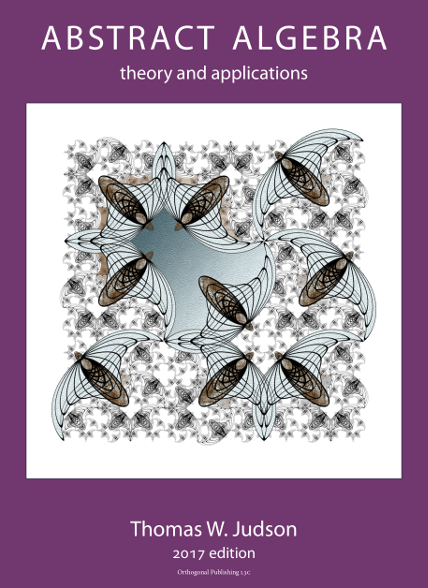Subsection7.2.2Homework 7
Homework exercises are valuable preparation for your quiz on this material. Generally I do not collect homework for grading -- however, I will expect to review your homework progress in the event of your requesting a revision on a quiz. You are welcome to discuss homework problems with your groups and with the class, both in person and in the Slack #math channel.
-
Exercises Section 7.6, #5 (skip part g).
-
Exercises Section 7.6, #11.
-
Exercises Section 7.6, #16.
-
Exercises Section 7.6, #17.
-
Exercises Section 7.6, #18.
-
Exercises Section 7.6, #1.
-
Exercises Section 7.6, #9.
- Let \(G\) be a group whose order is \(pq\text{,}\) where \(p,q\) are distinct primes. Prove that if \(H\lt G\) is a proper subgroup, then \(H\) must be cyclic.
- Let \(G\) be an abelian group with an odd number of elements. Prove that \(\prod_{g\in G} g = e\text{.}\) (In other words, the product of all the elements in \(G\) is the identity.)
- Let \(|G|=14\text{,}\) and assume \(G\) has only one subgroup of order 2 and one subgroup of order 7. Prove that \(G\) must be cyclic.
- Let \(|G|=63\text{.}\) Prove that \(G\) must have an element of order 3.
- Let \(G\) be a group that has elements of order \(k\) for all \(1\leq k \leq 12\text{.}\) What's the smallest possible order for the group \(G\text{?}\)
